I have researched extensively on how much salt to add to unsalted butter to make it salted. Unsalted butter is a staple in most kitchens and is often preferred by bakers and chefs for its pure, natural flavor.
However, some recipes require salted butter to enhance the taste.
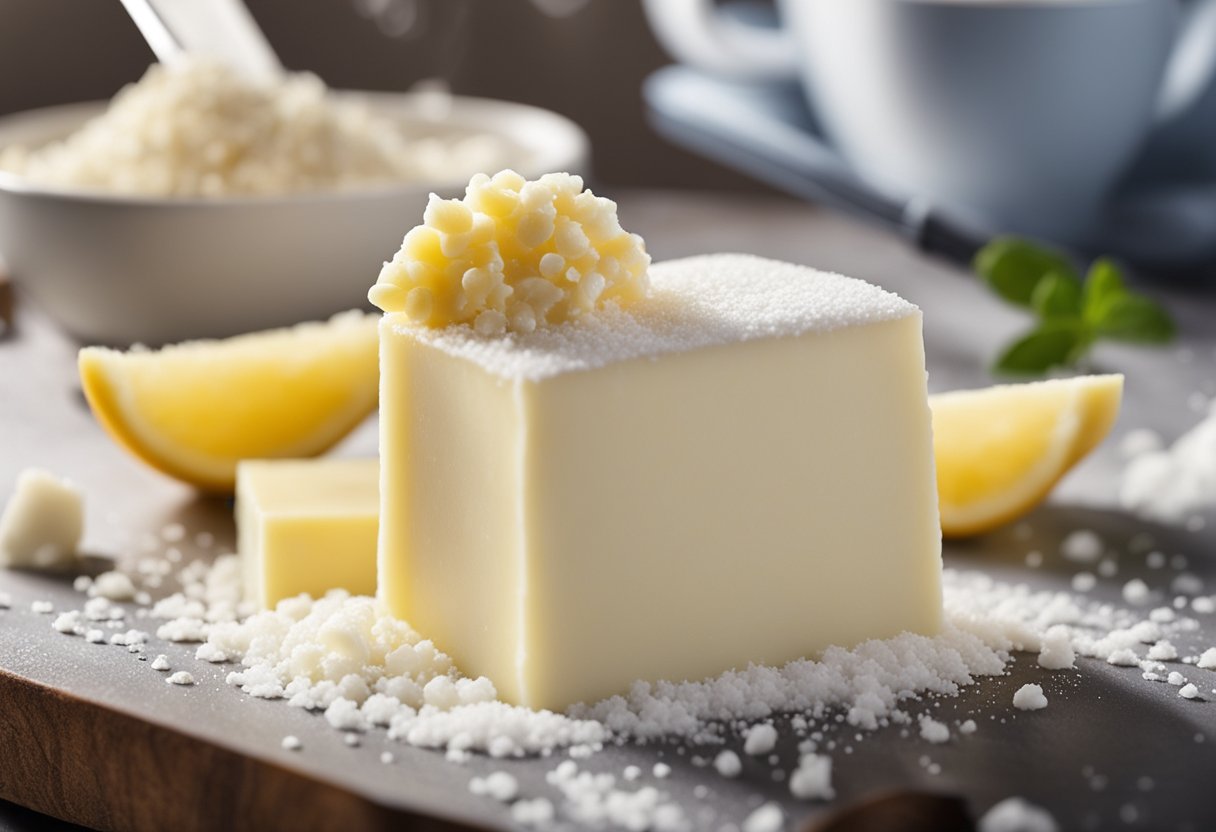
Adding salt to unsalted butter is a simple process, but the amount of salt to add can vary depending on the brand of butter and personal preference.
Some brands of salted butter have 3% salt, while others may have 2%, 1.5%, or even 1%. It is essential to know the right amount of salt to add to unsalted butter to achieve the desired level of saltiness.
Key Takeaways
- Adding salt to unsalted butter is a simple process, but the amount of salt to add can vary depending on the brand of butter and personal preference.
- The recommended salt-to-butter ratio is around 1/4 teaspoon of salt per 1/2 cup of butter, but it can be adjusted according to personal taste.
- Balancing the saltiness level in recipes is important, and it can be achieved by experimenting with different salt levels.
Understanding Unsalted and Salted Butter
As a baker, I know that butter is a crucial ingredient in many recipes. However, there are two types of butter: unsalted and salted. While they may seem interchangeable, there are some key differences between the two.
Unsalted butter is simply butter without salt added to it. It is typically used in baking to give the baker more control over the flavor of the final product.
Unsalted butter has a mild, creamy flavor that allows other ingredients to shine. It also has a shorter shelf life than salted butter, so it is important to use it before it goes bad.
On the other hand, salted butter has salt added to it during the churning process. This gives it a slightly tangy, salty flavor that can enhance the taste of certain dishes. Salted butter also has a longer shelf life than unsalted butter due to the salt acting as a preservative.
When it comes to substituting one for the other, it is possible but not always recommended. If a recipe calls for unsalted butter, it is best to use unsalted butter.
However, if you only have salted butter on hand, you can use it, but you may need to adjust the amount of salt in the recipe accordingly.
It is also important to note that different brands of butter may have different salt contents. Some brands may have 3% salt, while others may have 2%, 1.5%, or even 1%. This can affect the overall flavor of the dish, so it is important to pay attention to the brand of butter you are using.
In terms of fat content, both salted and unsalted butter contain the same amount of fat. However, salted butter may contain slightly more sodium due to the added salt.
When it comes to spreading butter on toast or bread, salted butter is often preferred due to its tangy flavor. However, when it comes to baking, it is best to use unsalted butter for more control over the flavor of the final product.
Overall, understanding the differences between unsalted and salted butter can help you make better decisions in the kitchen and create more delicious dishes.
Adding Salt to Unsalted Butter
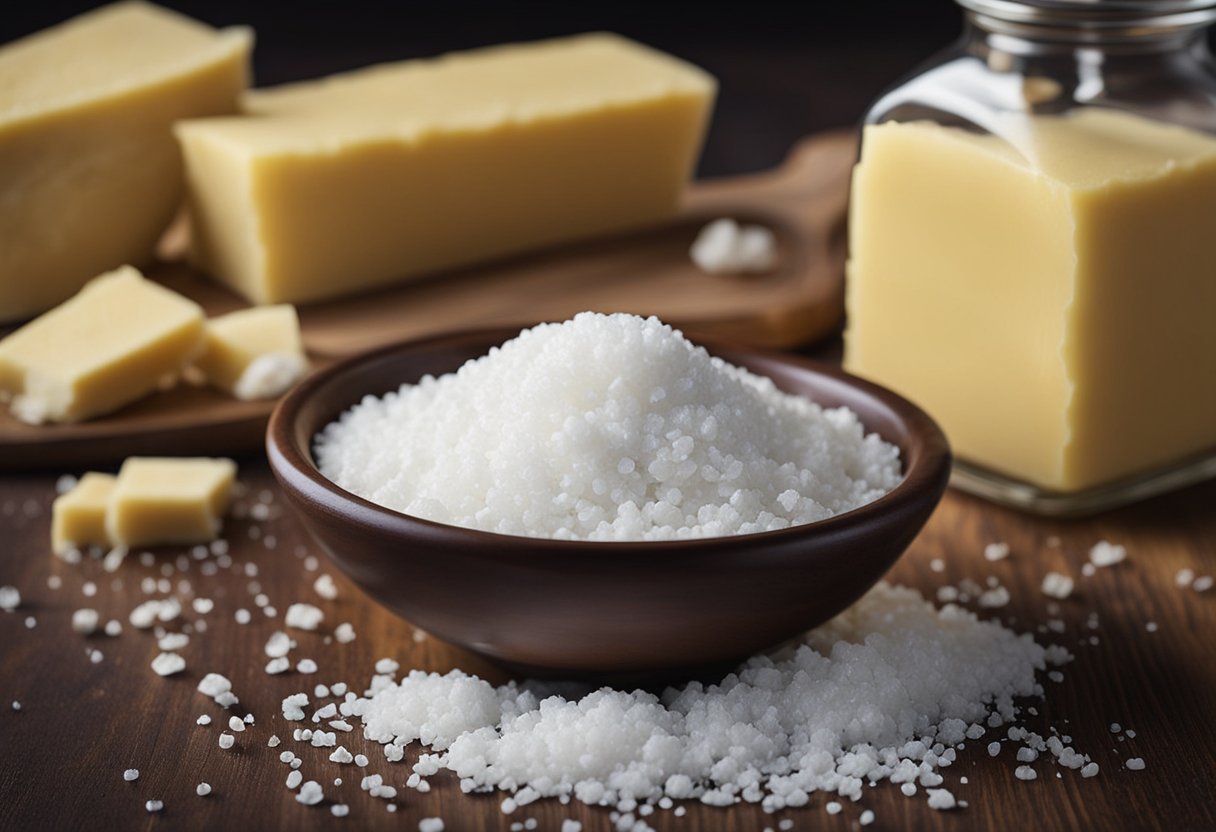
When a recipe calls for salted butter but all you have is unsalted butter, you may wonder how much salt to add to make it taste just right.
The amount of salt to add to unsalted butter depends on personal preference and the recipe you are making.
A good starting point is to add 1/4 teaspoon of salt for every stick (1/2 cup) of unsalted butter. However, keep in mind that the amount of salt in unsalted butter can vary, so it’s best to taste as you go and adjust accordingly.
When adding salt to unsalted butter, it’s important to mix it thoroughly to ensure an even distribution of salt.
You can use either table salt or kosher salt, but keep in mind that different types of salt have different levels of saltiness. For example, fine-grain salt will be saltier than coarse salts, so adjust the amount accordingly.
It’s also important to use room temperature butter when adding salt. Cold butter will not mix well with the salt, and you may end up with pockets of salt in your butter.
If you accidentally oversalt your butter, it’s harder to fix than undersalting. To avoid this, start with a small amount of salt and taste as you go. You can always add more salt, but you can’t take it away once it’s been added.
In summary, adding salt to unsalted butter is a simple process that can be adjusted to personal preference and the recipe you are making. Use room temperature butter, mix thoroughly, and start with a small amount of salt, tasting as you go.
The Role of Salt in Baking
As a baker, I have learned that salt plays a crucial role in baking. It is not just a flavor enhancer, but it also affects the texture and overall quality of baked goods.
Adding salt to unsalted butter is a common practice in baking, as it can help achieve the desired taste and texture of the final product.
One of the most important roles of salt in baking is that it helps to control the fermentation process of yeast. Yeast is a living organism that feeds on sugar and produces carbon dioxide, which makes the dough rise.
However, too much or too little salt can affect the yeast’s growth and fermentation, resulting in either a dense or over-expanded dough.
Salt also affects the protein in the flour, which is responsible for the structure and texture of baked goods. Without salt, the protein in the flour can become too elastic, resulting in tough and chewy baked goods.
On the other hand, too much salt can cause the protein to break down, resulting in a crumbly and dry texture.
In addition to its functional roles, salt also enhances the flavor of baked goods. It can balance out the sweetness in cakes and cookies, and add a savory note to bread. Adding salt to unsalted butter can help achieve the desired taste of the final product without overpowering it.
When it comes to adding salt to unsalted butter, the amount can vary depending on the recipe and personal preference.
A general rule of thumb is to add 1/4 tsp of salt per 1/2 cup (1 stick) of unsalted butter for a lightly salted butter. However, for an all-purpose salted butter, use 1/2 tsp of salt per 1/2 cup (1 stick) of unsalted butter.
In conclusion, salt plays a vital role in baking, affecting the texture, flavor, and overall quality of baked goods. Adding salt to unsalted butter is a common practice in baking, as it can help achieve the desired taste and texture of the final product.
Cooking with Salted and Unsalted Butter
As a cook, it is important to understand the difference between salted and unsalted butter, and when to use each type. Salted butter contains added salt, while unsalted butter does not.
When cooking with unsalted butter, it is important to add salt to the recipe to enhance the flavor. The amount of salt to add will depend on the recipe and personal preference.
As a general rule, ¼ teaspoon of salt should be added for every 8 tablespoons (1 stick) of unsalted butter.
For recipes that call for salted butter, it is important to note that different brands may have varying amounts of salt. Some brands may have 3% salt, while others may have 2%, 1.5%, or even 1%.
To ensure that the recipe is not too salty, it is best to check the label for exact measurements and adjust the amount of salt added accordingly.
When frying vegetables or cooking steak, it is best to use unsalted butter to avoid overpowering the natural flavors of the food.
However, when making sauces or dishes that require melted butter, either salted or unsalted butter can be used depending on personal preference.
In summary, understanding the difference between salted and unsalted butter is crucial for successful cooking.
Adding salt to unsalted butter is necessary for enhancing flavor, while adjusting the amount of salt added to recipes that call for salted butter is important to avoid making the dish too salty.
The Impact of Salt on Butter’s Shelf Life
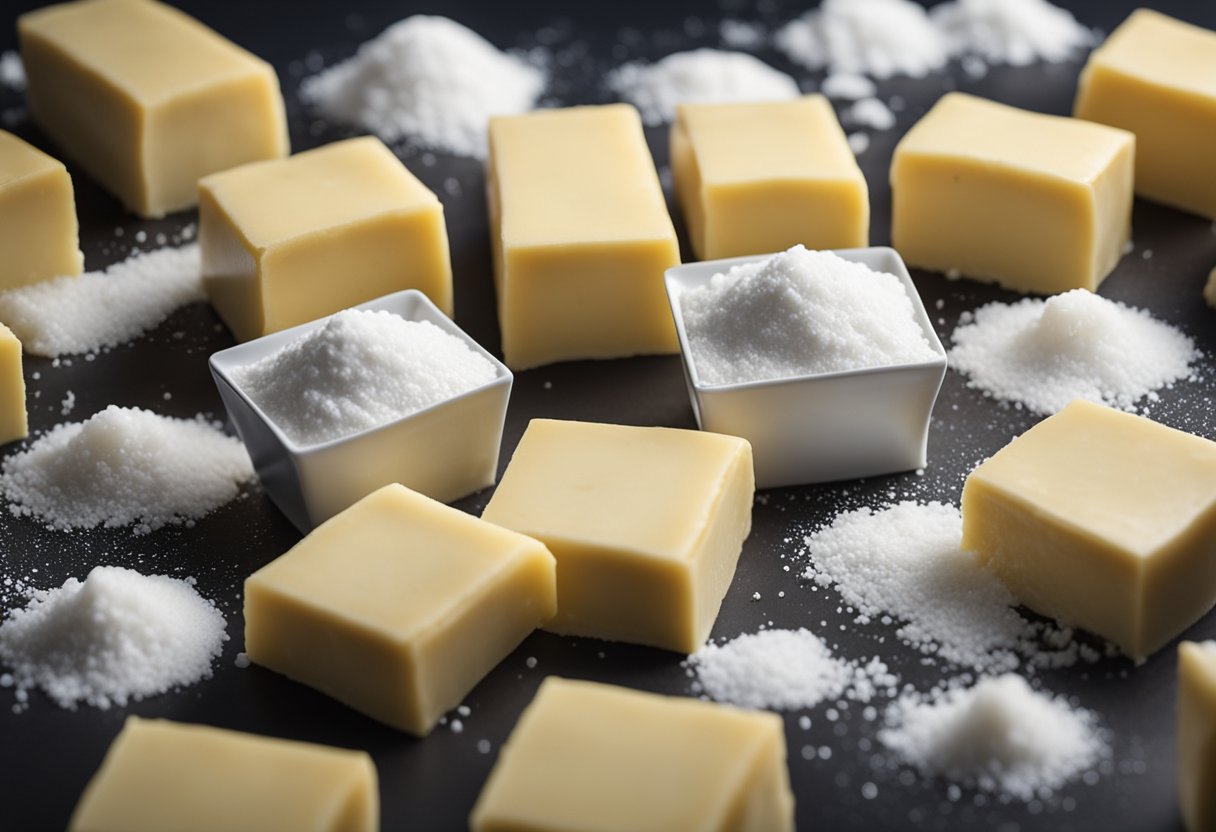
Adding salt to butter can help extend its shelf life. Salt acts as a natural preservative by inhibiting the growth of bacteria that can cause spoilage.
When salt is added to butter, it helps to create an environment that is less hospitable to bacteria, which can cause the butter to spoil.
Butter that has been salted can be stored in the fridge for longer periods than unsalted butter. Typically, salted butter can last for up to three months in the fridge, while unsalted butter should be used within two weeks of purchase.
However, it is important to note that the shelf life of butter can vary depending on factors such as storage conditions and the quality of the butter.
It is important to store butter properly to ensure that it stays fresh for as long as possible. Butter should be kept in an airtight container in the fridge to prevent it from absorbing odors or flavors from other foods.
It is also important to keep butter away from light and heat, as this can cause it to spoil more quickly.
In conclusion, adding salt to butter can help to extend its shelf life by acting as a natural preservative.
Salted butter can be stored in the fridge for longer periods than unsalted butter, but it is important to store butter properly to ensure that it stays fresh for as long as possible.
Choosing the Right Butter for Your Recipe
When it comes to baking or cooking, choosing the right type of butter is crucial to achieving the desired taste and texture.
While salted and unsalted butter can be used interchangeably in most recipes, it’s important to consider personal preference and control over the amount of salt in the recipe.
For recipes that call for unsalted butter, it’s best to use unsalted butter to maintain control over the amount of salt in the dish. If you use unsalted butter and also add the prescribed amount of salt, the food can come out too salty.
On the other hand, if you use salted butter when the recipe calls for unsalted, the dish may not have enough salt to bring out the flavors.
When substituting salted butter for unsalted butter, keep in mind that salted butter contains approximately 1/4 teaspoon of salt per 1/2 cup (1 stick) of butter.
Therefore, for every 1/2 cup of salted butter called for in the recipe, reduce the amount of salt by 1/4 teaspoon.
Conversely, when substituting unsalted butter for salted butter, add 1/4 teaspoon of salt for every 1/2 cup of unsalted butter called for in the recipe.
Ultimately, the choice between salted and unsalted butter comes down to personal preference and the level of control desired over the amount of salt in the recipe.
While both options are interchangeable, using the right type of butter can make a significant difference in the taste and texture of your dish.
How to Soften and Mix Butter
When adding salt to unsalted butter, it’s important to ensure that the butter is softened and mixed well.
This will ensure that the salt is evenly distributed throughout the butter, resulting in a consistent flavor in your recipe. Here are some tips on how to soften and mix butter:
Softening Butter
Butter needs to be at room temperature before it can be mixed with salt. If you’re short on time, you can soften butter quickly by microwaving it for a few seconds.
However, be careful not to overheat the butter, as this can melt it and affect the texture of your recipe.
A better way to soften butter is to leave it out at room temperature for a few hours. This will allow the butter to soften naturally without melting. If you’re in a hurry, you can speed up the process by cutting the butter into small pieces or flattening it with a rolling pin.
Mixing Butter
Once your butter is softened, it’s time to mix in the salt. You can do this by hand or with an electric mixer. If you’re mixing by hand, use a fork or a whisk to mix the salt into the butter. Be sure to mix the salt in thoroughly to ensure that it’s evenly distributed.
If you’re using an electric mixer, use the paddle attachment and mix the butter on low speed until it’s soft and creamy.
Then add the salt and mix on low speed until the salt is evenly distributed throughout the butter. Be sure to scrape down the sides of the bowl with a spatula to ensure that all of the butter is mixed in.
Letting the Butter Sit
After mixing in the salt, it’s a good idea to let the butter sit for a while before using it in your recipe. This will allow the salt to dissolve and distribute evenly throughout the butter.
You can let the butter sit at room temperature, or you can chill it in the refrigerator for a few minutes to help it set.
Conclusion
By following these tips, you can ensure that your salted butter is evenly mixed and has a consistent flavor. Softening and mixing butter is an important step in many recipes, so it’s worth taking the time to do it right.
Enhancing the Flavor of Butter
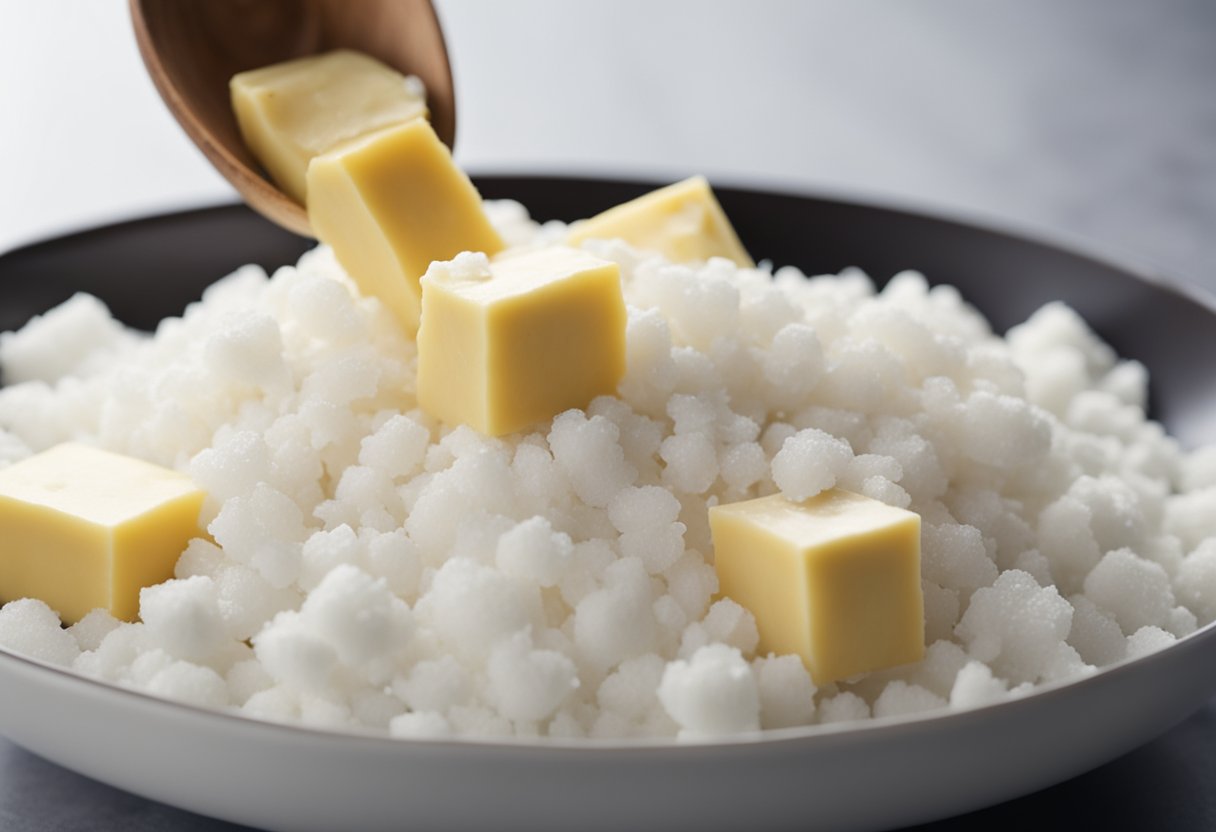
As a chef, I often use unsalted butter as a base for many of my recipes. While unsalted butter is great for baking, it can lack the depth of flavor that salted butter provides. Adding salt to unsalted butter can enhance its flavor and add richness to your dishes.
One way to enhance the flavor of butter is by using sea salt. Sea salt has a natural tangy flavor that can complement the creamy taste of butter. It also has a coarser texture that can add a satisfying crunch to your recipes.
Another way to add flavor to butter is by incorporating herbs, spices, and seasonings. Garlic powder and onion powder are two common seasonings that can add a savory taste to your butter.
Fresh herbs like rosemary, thyme, and sage can also add a fragrant aroma to your recipes.
When adding salt or seasonings to butter, it’s important to use the right amount. A general rule of thumb is to add 1/4 teaspoon of salt per 1/2 cup of butter.
However, the amount of salt can vary depending on personal taste. It’s best to start with a small amount and gradually add more until you reach your desired flavor.
In summary, adding salt and seasonings to unsalted butter can enhance its flavor and add richness to your dishes.
Sea salt, herbs, and spices are all great options to consider when adding flavor to your butter. Just remember to use the right amount and experiment with different combinations until you find the perfect balance of taste and flavor.
Nutritional Considerations of Salted Butter
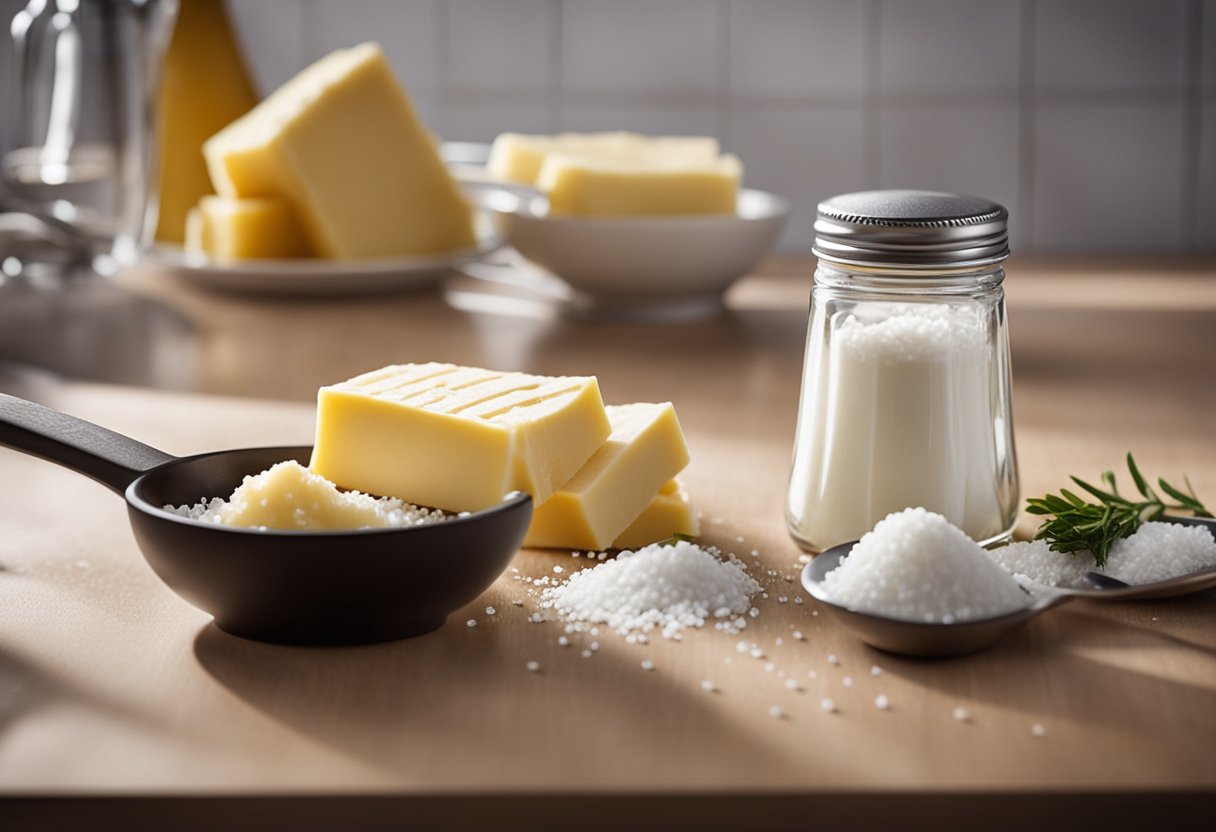
I have always wondered if there are any significant nutritional differences between salted and unsalted butter. After doing some research, I have found that there are some differences to consider.
Sodium Content
Salted butter contains added salt, which means it has a higher sodium content than unsalted butter.
According to Foods For Better Health, one cup of salted butter contains approximately 1,500 milligrams of sodium, while one cup of unsalted butter contains only 11 milligrams of sodium.
This means that if you are on a low-sodium diet, unsalted butter is the better choice.
Diet Considerations
If you are watching your calorie intake, it is worth noting that both salted and unsalted butter have the same number of calories.
According to the same source, one cup of either type of butter contains approximately 1,628 calories. However, if you are trying to reduce your sodium intake, unsalted butter is the better choice.
Healthier Option
While both salted and unsalted butter are high in saturated fats, unsalted butter may be considered the healthier option due to its lower sodium content. A high intake of sodium can increase blood pressure, which can lead to heart disease and stroke.
Therefore, it is recommended to limit your sodium intake and choose unsalted butter when possible.
In conclusion, while salted and unsalted butter are similar in many ways, there are some nutritional differences to consider. If you are on a low-sodium diet or trying to reduce your sodium intake, unsalted butter is the better choice.
However, if you are not concerned about your sodium intake, either type of butter can be used interchangeably in recipes.
The Art of Making Homemade Butter
Making homemade butter is an enjoyable and rewarding experience. Not only is it easy to make, but it also tastes better than store-bought butter. To make homemade butter, all you need is heavy cream, a pinch of salt, and a mixer.
First, pour the heavy cream into a bowl and start mixing it on low speed. After a few minutes, the cream will start to thicken and turn into whipped cream. Keep mixing until the whipped cream starts to separate, and the liquid (buttermilk) starts to appear.
Once the buttermilk has separated from the whipped cream, strain the liquid out of the bowl, and you will be left with the butter. At this point, you can add a pinch of salt to the butter to give it a creamy, zingy flavor.
When it comes to adding salt to homemade butter, it’s important to get the balance right. Too little salt can leave the butter bland, while too much salt can overpower the natural flavors.
As a general rule, it’s recommended to add between 1-4 teaspoons of salt to a cup of butter. However, the amount of salt to add depends on personal preference.
To add a crunch to your homemade butter, you can also mix in some herbs or spices. For example, you can add garlic, rosemary, or thyme to create a savory butter that is perfect for spreading on toast or using in cooking.
In conclusion, making homemade butter is a fun and easy process that can result in a delicious and creamy spread. By adding a pinch of salt and some herbs or spices, you can create a butter that is tailored to your taste buds.
So, why not give it a try and see for yourself how much better homemade butter can taste compared to store-bought butter?
Guide to Buying Butter
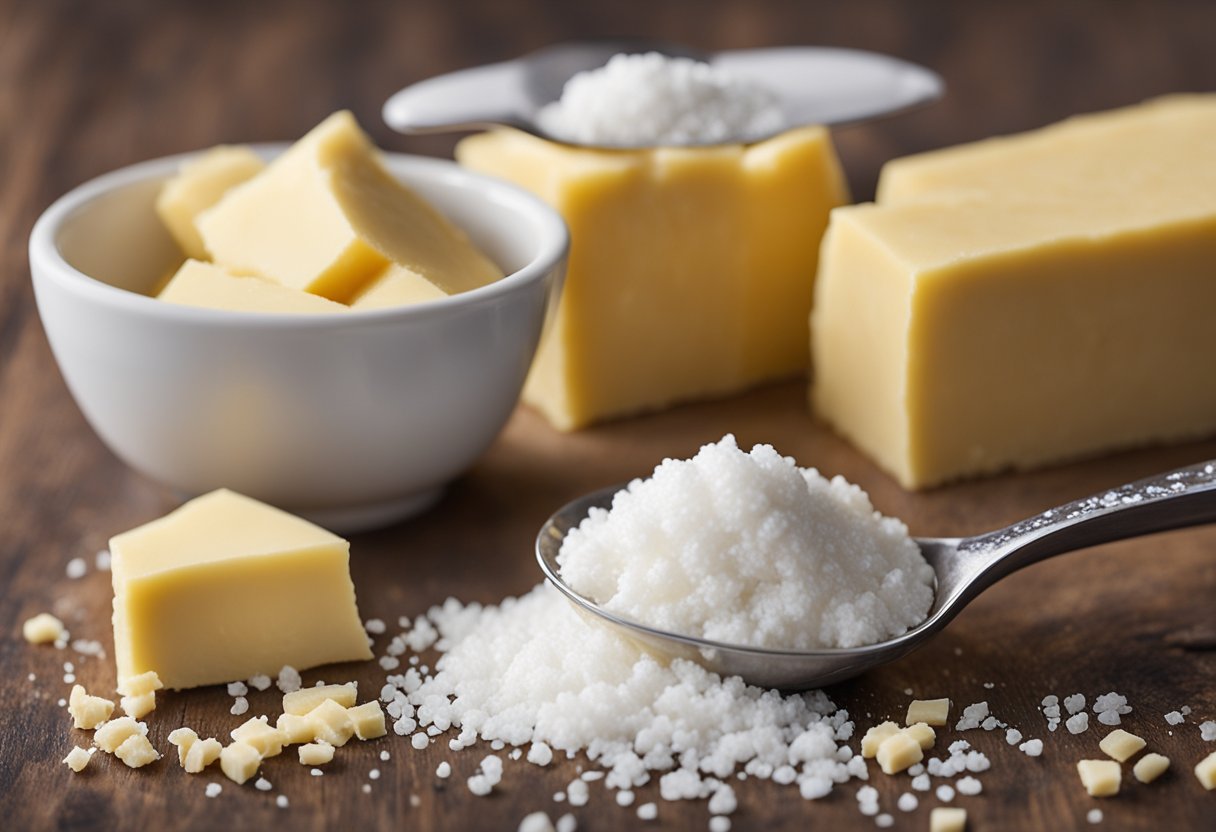
When it comes to buying butter, there are a few things to consider. First and foremost, it is important to decide whether you want salted or unsalted butter.
If you are planning to use the butter for baking, it is generally best to use unsalted butter so that you can control the amount of salt in your recipe.
When buying unsalted butter, it is important to pay attention to the brand and label. Some brands might have a higher salt content than others, so it is important to read the label carefully.
Look for butter that has no added salt, or a low salt content, so that you can add salt to taste.
If you are looking for a specific brand of butter, check your local supermarket or stores that specialize in dairy products. Many brands of butter are widely available, but some may be more difficult to find.
It is also worth noting that some brands of butter may be more expensive than others, so it is important to weigh the cost against the quality.
When buying salted butter, it is important to keep in mind that the salt content can vary widely between brands. Some brands may have a very high salt content, while others may have a more moderate amount.
If you are looking for a specific level of saltiness, it is important to read the label carefully and choose a brand that meets your needs.
Overall, when buying butter, it is important to be knowledgeable about the brands and labels available.
By paying attention to the salt content and choosing a high-quality brand, you can ensure that your butter will add the perfect touch of flavor to your favorite recipes.
Butter in Sweet and Savory Dishes

When it comes to baking, unsalted butter is the preferred choice. This is because it allows you to control the amount of salt in your recipe. However, when it comes to savory dishes, salted butter can be used without any issues.
For sweet dishes like cookies, cakes, and pancakes, unsalted butter is the way to go. This is because too much salt can ruin the flavor of the dish.
As a general rule of thumb, you should add 1/4 teaspoon of salt per 1/2 cup of unsalted butter to achieve a mild salted flavor. However, you can add up to 1/2 teaspoon of salt per stick of unsalted butter, depending on your personal taste preference.
When it comes to bread, unsalted butter can be used for both sweet and savory bread recipes. However, if you prefer a slightly salty taste in your bread, you can use salted butter.
For toast, both salted and unsalted butter can be used. It really comes down to personal preference. If you prefer a slightly salty taste, go for salted butter. If you prefer a milder taste, go for unsalted butter.
When it comes to chocolate chip cookies, unsalted butter is the recommended choice. This is because the chocolate chips already contain salt, and adding salted butter can result in an overly salty flavor.
In summary, when it comes to sweet dishes, use unsalted butter. For savory dishes, salted butter can be used without any issues. However, it’s always a good idea to taste your dish before adding any additional salt.
Using Butter as Topping or Spread
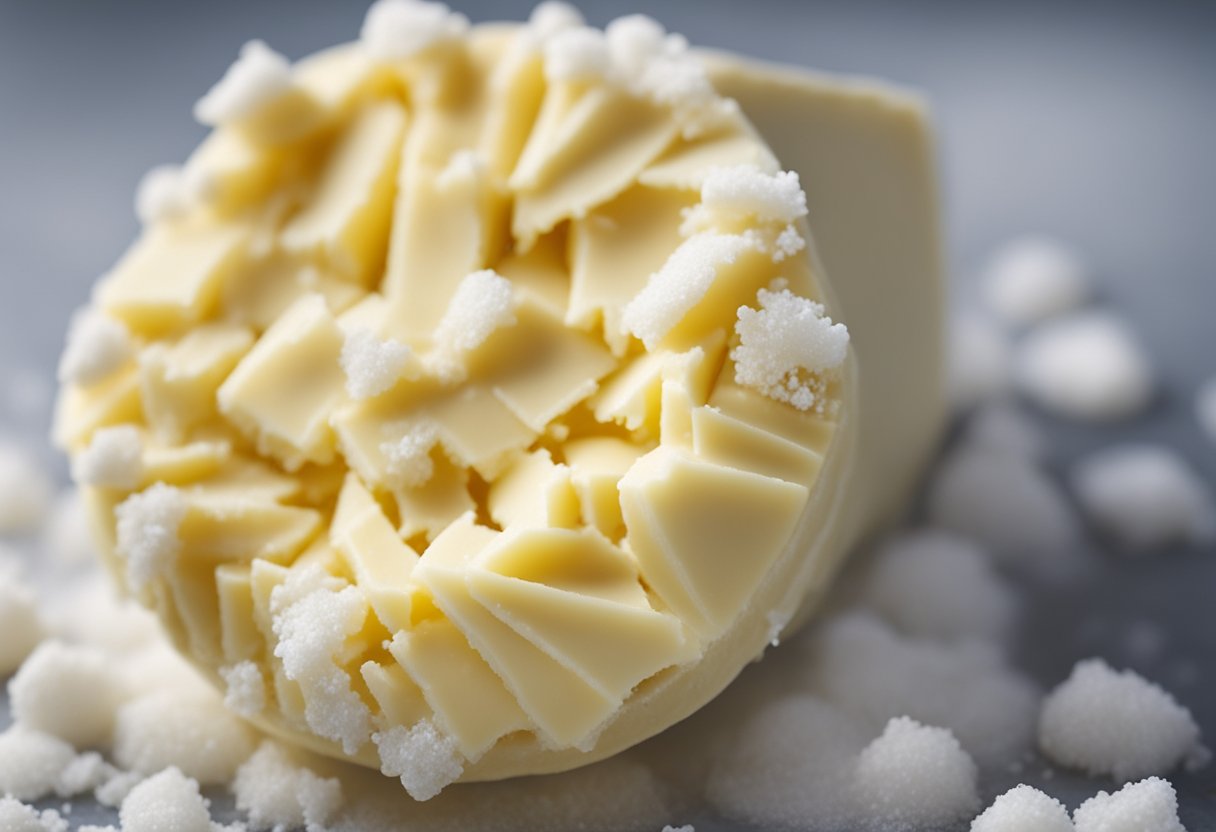
When it comes to using butter as a topping or spread, the type of butter you use can make a big difference in the flavor and texture of your food.
For example, unsalted butter is a great choice for spreading on toast, as it allows the flavor of the bread to shine through.
Salted butter, on the other hand, can be too overpowering and can mask the flavors of other ingredients.
If you prefer salted butter as a topping or spread, you can still use unsalted butter and add salt to taste.
As a general rule, you can add between 1-4 teaspoons of salt per cup of unsalted butter, depending on your personal preference. It’s best to start with a small amount of salt and add more as needed, as too much salt can quickly overwhelm the flavor.
Butter can also be a delicious topping for pancakes and waffles. For a sweet twist, try adding a little bit of honey or maple syrup to your butter before spreading it on your pancakes or waffles. You can also mix in some cinnamon or other spices for an extra burst of flavor.
When using butter as a topping or spread, it’s important to keep in mind that it is high in calories and fat. If you are watching your calorie intake, you may want to use a lighter spread, such as margarine or a low-fat butter substitute.
Overall, butter can be a delicious and versatile topping or spread for a variety of foods. By choosing the right type of butter and adding your own flavorings, you can create a delicious and unique taste that is sure to please.
Professional Tips and Tricks
As a professional chef, I have learned some tips and tricks for adding salt to unsalted butter.
Here are some guidelines and adjustments that I find helpful:
- Measuring: Always measure your ingredients accurately. Too much or too little salt can ruin a dish. Use a fork to mix the salt into the butter evenly.
- Guidelines: The general rule of thumb is to add 1/4 teaspoon of salt per 1/2 cup of unsalted butter. However, this can vary depending on your personal taste and the recipe you are making.
- Adjustment: If you are unsure about how much salt to add, start with a small amount and gradually add more until you reach the desired taste. Remember, it is always easier to add more salt than to take it away.
- Chefs: Professional chefs often use unsalted butter in their recipes because it allows them to control the amount of salt in their dishes. This is especially important when making sauces or baked goods.
- Fork: When mixing salt into unsalted butter, use a fork instead of a spoon. This allows you to mix the salt evenly without overworking the butter.
- Guide: If a recipe calls for salted butter and you only have unsalted butter, you can add salt to the recipe to compensate. Use the guidelines above to determine how much salt to add.
By following these tips and tricks, you can add the perfect amount of salt to your unsalted butter and create delicious dishes every time.
Conclusion
In conclusion, adding salt to unsalted butter is a matter of personal preference. It is important to keep in mind that not all unsalted butter brands have the same salt content, so it is best to taste the butter before adding salt to it.
Adding salt to unsalted butter can help balance out the flavors and enhance the overall taste of the dish. It can also make the butter more versatile and suitable for use in a wider range of recipes.
When adding salt to unsalted butter, it is recommended to start with a small amount and gradually add more until the desired flavor is achieved.
A common ratio is ¼ teaspoon of salt for 8 tablespoons of butter, but this can vary depending on personal preference and the recipe being used.
It is also important to note that adding salt to unsalted butter can affect the aroma of the butter. Salt can help bring out certain flavors and aromas, but it can also mask or overpower others.
Overall, adding salt to unsalted butter is a simple and effective way to enhance the flavor of your dishes. With a bit of experimentation and practice, you can find the perfect balance of salt and butter for your cooking needs.
Related post: How Do You Reduce Heavy Cream
Frequently Asked Questions
How much salt is in a stick of butter in teaspoons?
The amount of salt in a stick of butter varies depending on the brand and type of butter. Generally, a stick of salted butter contains around 1/4 teaspoon of salt, while unsalted butter contains no salt.
However, it’s important to always check the label for the exact amount of salt in your butter.
What happens if you use salted butter instead of unsalted?
If a recipe calls for unsalted butter and you use salted butter instead, it will affect the overall taste of the dish.
The salt in the butter will add an extra layer of flavor that may not be desirable in certain recipes. Additionally, using salted butter can make it difficult to control the amount of salt in the dish.
Difference between salted and unsalted butter in baking?
In baking, the main difference between salted and unsalted butter is the amount of salt in the butter.
Unsalted butter allows the baker to control the amount of salt in the recipe, while salted butter already contains salt. This can be important in recipes where precise measurements are necessary for the best results.
Can I use salted butter instead of unsalted for cake?
While it is possible to use salted butter instead of unsalted in a cake recipe, it is not recommended. The extra salt in the butter can affect the overall taste of the cake and make it too salty.
Additionally, using salted butter can make it difficult to control the amount of salt in the recipe, which can affect the texture and consistency of the cake.
Can I use salted butter instead of unsalted for cookies?
Using salted butter instead of unsalted in a cookie recipe is possible, but it is not recommended. The extra salt in the butter can affect the overall taste of the cookies and make them too salty.
Additionally, using salted butter can make it difficult to control the amount of salt in the recipe, which can affect the texture and consistency of the cookies.
What to do if recipe calls for unsalted butter can I use salted?
If a recipe calls for unsalted butter and you only have salted butter on hand, you can use it instead. However, you should reduce the amount of salt in the recipe to compensate for the salt in the butter.
As a general rule, reduce the amount of salt in the recipe by 1/4 teaspoon for every stick of salted butter used.





